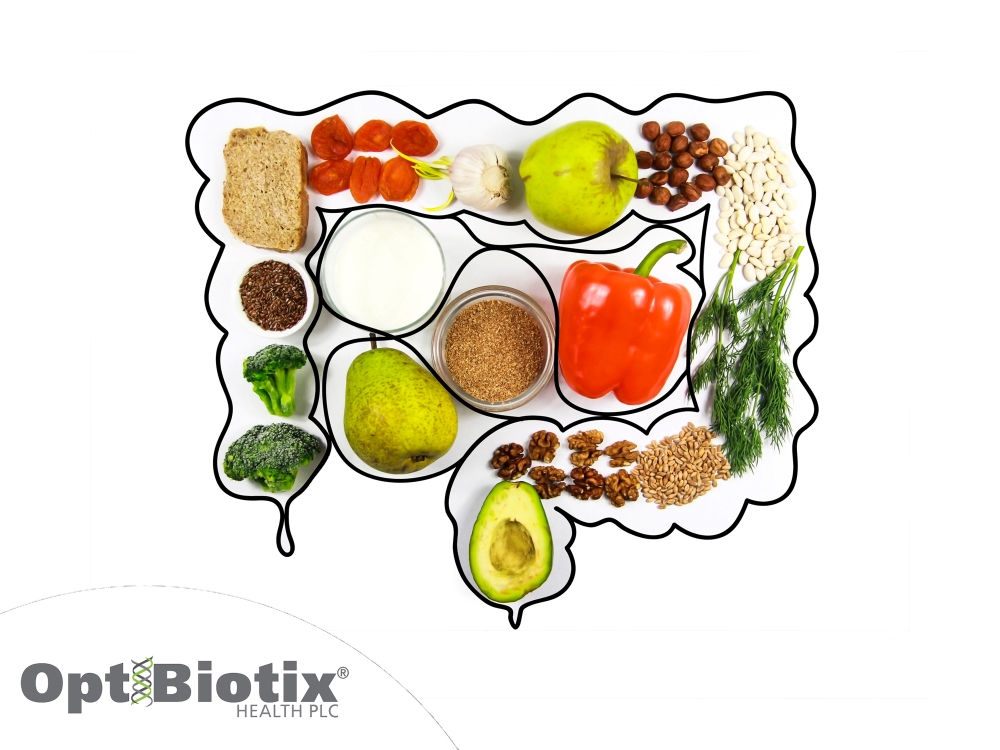
Trusting the gut – how can consumers improve their gut microbiome balance?
When developing the next generation of health-oriented food and drink products, or supplements such as shakes and gummies, formulators always need to stay one step ahead of the consumer market.
Often, we tend to think of the health and wellbeing category as more ‘fixed’ in terms of consumer trends, but that’s not true – it can be just as susceptible to trends, influences and patterns.
Moving to the top of the global consumer agenda is gut health. The gut microbiome, the ecosystem of trillions of ‘good’ and ‘bad’ bacteria in the gut, are understood to play a key role in health and are connected with the body’s natural functions far beyond just digestion. The gut microbiome is a finite space and has an ever-shifting composition. When we talk gut health, we are often describing the process of increasing the levels of beneficial bacteria and by doing so, allowing the gut to exert a positive effect on physical or mental wellbeing.
Of course, as the benefits of better gut health become more widely acknowledged and switch from niche studies to public health knowledge, consumers get more engaged with the topic and more proactive with their own health and wellbeing.
The commercial potential is clear; according to research firm Fortune Business Insights, the digestive health market is set to grow at a robust compound growth rate (CAGR) of 7.9% to 2027[1], representing a total market value of USD 71.95bn.
As part of the digestive system, the gut microbiome is directly connected to, and influenced by, nutrition and diet. With March being National Nutrition Month, it’s an ideal time to explore the varied ways that consumers across the globe can improve their gut health through nutritional choices.
Nutritional diversity
When looking to create a diverse microbiome, with different types of beneficial bacteria, it’s important to understand that bacteria are nourished by distinctive nutrients. With up to 500[2] different types of bacterial species, one of the best ways to promote a diverse microbiome is through a varied diet, which will naturally feature a broader range of nutrients. Bacteria in the gut exist in a constantly shifting balance. As consumers seek to create a more optimal, favourable and diverse balance, it stands to reason that variation in the diet is key.
For consumers, a simple food pyramid can provide guidance on beginning a more varied dietary pattern, with the goal of broadening nutrient and mineral intake.
Probiotics and fermented foods
The probiotic category, including functional foods and dedicated supplements, has become established in public awareness.
Probiotics are live cultures that are added to the gut microbiome to increase levels of beneficial bacteria. Fermented foods are connected to this category as the fermenting process naturally cultivates probiotic bacteria. This means fermented foods such as kimchi, sauerkraut and kefir could create a more harmonious gut microbiome by being incorporated into the diet.
Probiotics can of course also be developed into standalone supplements and products. Our own probiotic ingredient LPLDL® is a prime example of both where this approach is adding value for formulators, and of how important the gut microbiome is to wider physical health.
Backed by a comprehensive portfolio of studies, LPLDL® harnesses the microbiome-liver axis to positively impact the gut microbiome and support a more favourable composition, and in doing so, positively impact cardiovascular health. The ingredient is shown to reduce harmful low-density lipoprotein (LPL) by up to 13.9%, while increasing beneficial high-density lipoprotein (HDL) by up to 4.5% – with a total cholesterol reduction of up to 36.7%.
The ingredient benefits from world class-leading stability during processing, making it ideal for a wide range of functional food and supplement products across the consumer and pharmaceutical care sectors. Find out more about LPLDL® here.
Explore the advantages of prebiotics
Prebiotics are a much newer category than the more established range of probiotics available today but are set to make an enormous impact on the health and wellness market.
Where probiotic products add more beneficial bacteria to the gut microbiome, prebiotics are fibre substrates that nourish the good bacteria that are already present in the gut. Some of the most advantageous bacterial strains in the gut are fuelled by prebiotic fibre.
Depending on the application, the use of prebiotics can have valuable advantages for formulators in terms of versatility and manufacturing. Prebiotics most commonly take the form of supplements, such as powders, but are finding an increasing foothold in the functional foods category.
In response to the changing needs of the market, OptiBiotix has developed WellBiome®, a functional fibre and mineral blend that forms a single high-performance ingredient. The composition of the ingredient is associated with key areas of health in nourishing certain bacteria, including modulation of the immune function, digestive health and improved bowel function.
As digestive health continues climbing the consumer agenda, it’s an ideal time for brands to explore the many varied routes and paths that this can take. With an engaged consumer health market moving from strength to strength, nutrition takes centre stage.
With growing commercial power, the opportunities that open up for brands and the formulators they rely on are more important than ever. With a partner like OptiBiotix, that puts scientific principles and efficacy at the core, it has never been easier to lead truly consumer-led product development.
For more information on ingredients from OptiBiotix or our distribution partners, contact us here.
[1] https://www.fortunebusinessinsights.com/digestive-health-market-104750
[2] https://www.ncbi.nlm.nih.gov/pmc/articles/PMC3983973/
